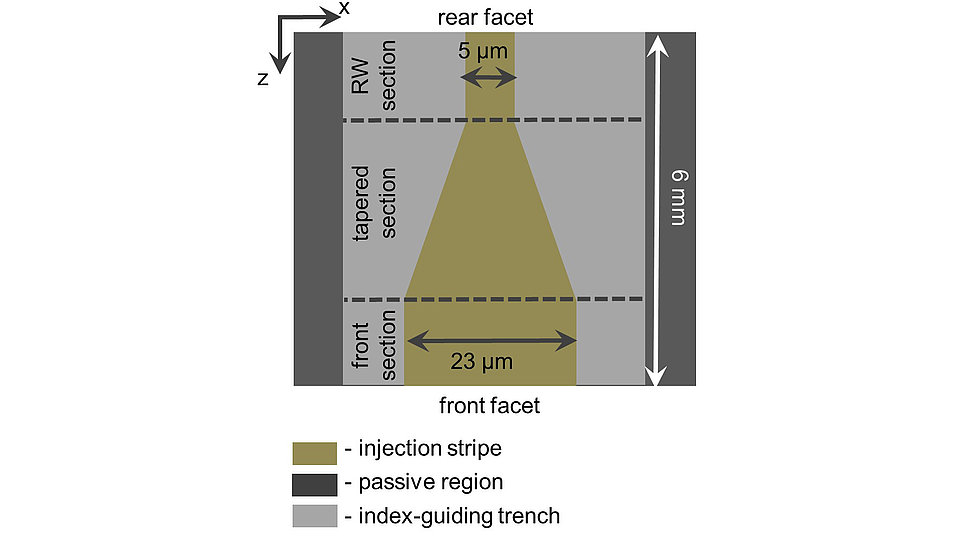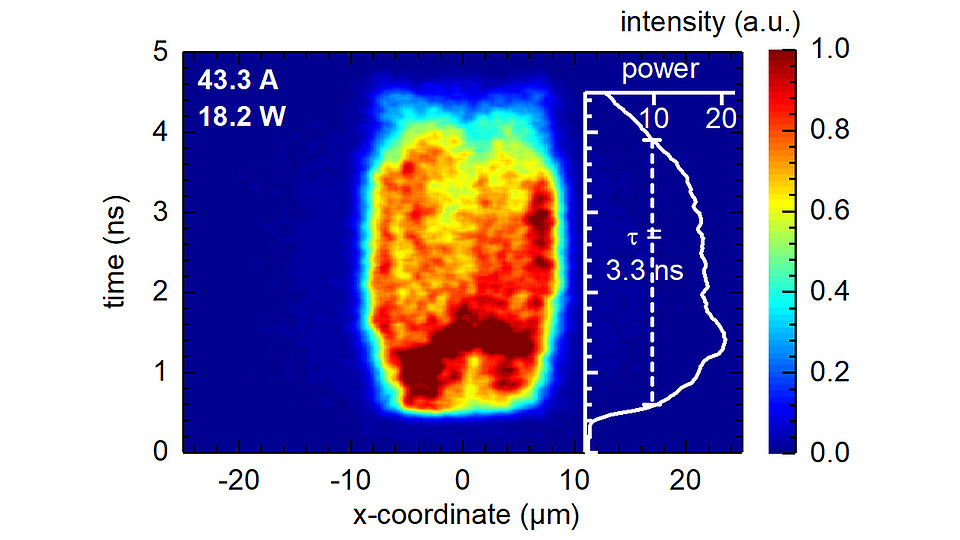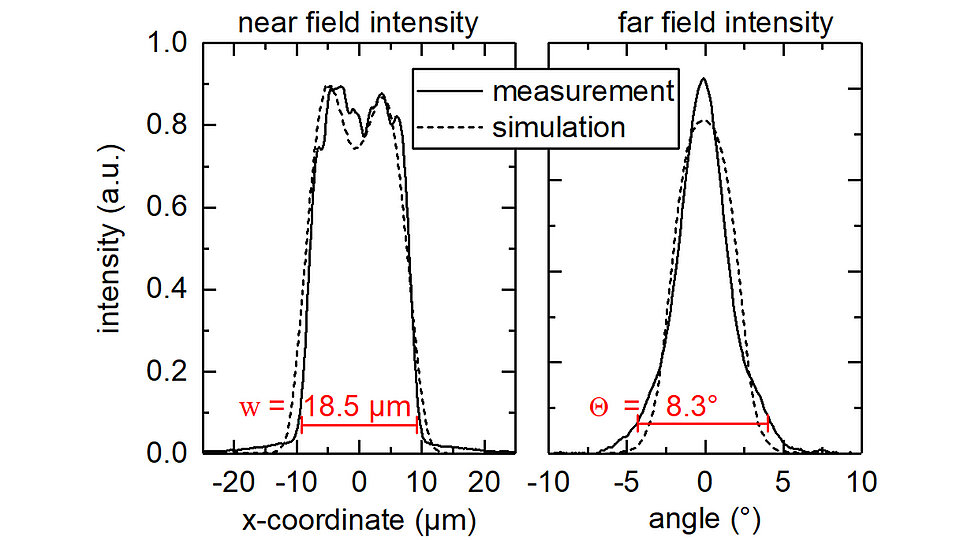Novel tapered RW lasers for high-power LiDAR applications
Fig. 1: Top view sketch of the investigated laser structure that has a ridge waveguide (RW) section, a tapered section and a front section.
Fig. 2: Time-resolved measurement of the optical field intensity at the output facet, measured at a pulse power of 18.2 W and injection current of 43.3 A. Inset: Total output power as function of time for the 3.3 ns long pulse.
Diode lasers generating several nanosecond long optical pulses with high brightness, i.e. high peak optical powers and good beam quality, are key components of scanning LiDAR (Light Detection And Ranging) systems used in autonomous driving or robotics. Recently, FBH scientists showed 3.3 ns long pulse power operation with more than 18 W output power and an excellent brightness of 27.4 Wmm−1mrad−1 from novel tapered ridge waveguide (RW) lasers.
At the FBH, an existing design was optimized for pulsed operation with few nanosecond long pulses that showed excellent beam characteristics under continuous conditions. An exemplary top view sketch of these lasers is shown in Fig. 1. Besides the injection stripe index-guiding trenches are etched to ensure effective guiding of the laser light in the absence of a thermally induced waveguide.
The lasers are separated into three sections (see Fig. 1): The ridge waveguide (RW) section with a width of 5 µm is narrow enough to support only the fundamental lateral mode and can thus act as a mode filter to ensure a good beam quality. In the tapered section the injection stripe is enlarged so that in the front section it reaches 23 µm. In this way, the power density within the front section is reduced compared to a narrow stripe and the laser can reach higher powers without failure.
An exemplary time-resolved measurement of the optical field intensity at the output facet is shown in Fig. 2, measured at a pulse power of 18.2 W and an injection current of 43.3 A. In the inset, the power as function of time is also visible. In Fig. 3, the measured and simulated lateral near- and far-field intensity profiles are shown. They have an experimental near-field width of w = 18.5 µm and a far-field angle Q = 8.3°. Both field profiles agree well with simulations. The beam parameter product BPP quantifies the beam quality and is determined by the product of half the near-field width w/2 and half the far-field angle, BPP = w Q/4 = 0.7 mm mrad. Including the output power P = 18.2 W into the calculation, an exceptionally high brightness value of B = P/BPP = 27.4 Wmm−1mrad−1 is achieved.
This work was supported by the German Space Agency DLR with funds provided by the Federal Ministry of Economics and Technology (BMWi) under Grant Number 50RA1924 and by the German Federal Ministry of Education and Research (BMBF) under the project reference 16FMD02 (Forschungsfabrik Mikroelektronik Deutschland).
Publications
A. Zeghuzi, H. Christopher, A. Klehr, J.-P. Koester, H. Wenzel, und A. Knigge. „High-Brightness Nanosecond-Pulse Operation From Tapered-Ridge-Waveguide Lasers“, IEEE Photonics Technology Letters, vol. 33, no. 3, pp. 151–54, 2021.
H. Christopher, A. Zeghuzi, A. Klehr, J. P. Koester, H. Wenzel, and A. Knigge, "Experimental investigation of nanosecond pulsed tapered-waveguide lasers obtaining extremely high brightness values", CLEO/Europe-EQEC 2021.


